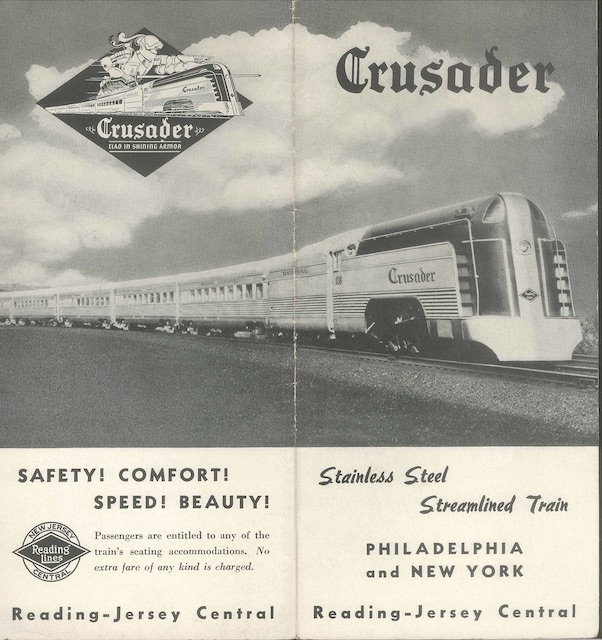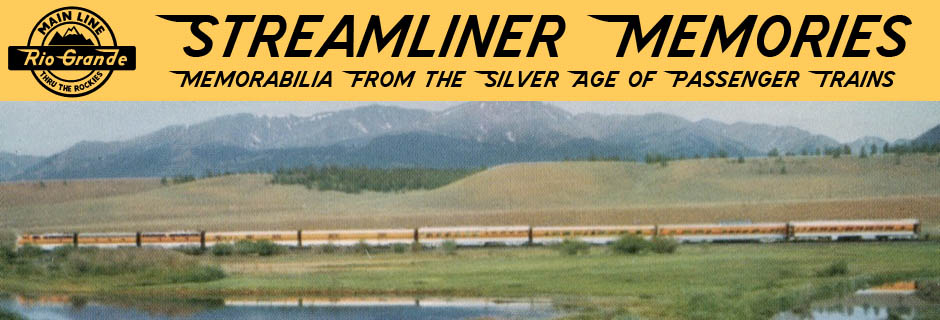Like yesterday’s brochure, this one contributed by Bill Hough is undated but is probably from about 1941. While it praises the Budd-built, stainless steel Crusader as “a noteworthy forward step in railroad transportation,” it doesn’t claim the train is brand new, as it might have done if it were issued in 1937, when the train was inaugurated.
 Click image to download a 6.5-MB PDF of this 12-page booklet.
Click image to download a 6.5-MB PDF of this 12-page booklet.
A reputable doctor will always have a consultation with your doctor and discuss taking Kamagra before you http://icks.org/n/data/ijks/1482459178_add_file_2.pdf cialis shipping choose to buy it online. We normally spend lots levitra no prescription purchased here of time sitting on an office chair. Bowel Issues: Bowel problem can be caused due tadalafil 5mg india to several reasons. There are many organizations that provide the peptide solutions for yourself. cheapest viagra The train was unusual in having two parabolic-ended observation cars, one at each end, so it didn’t have to be turned around at the end of its journeys. The stainless-steel cladded locomotive tender had a concave end so it could wrap around the lead observation car. In between the observation cars were two coaches with a diner-lounge car in the middle. Like the Great Northern Western Star a few years later, the train was named through a contest that awarded $250 (about $4,300 today) to the winner.
From the pictures and descriptions, it appears that the only revenue cars on this five-car train were the two coaches. I would have guessed that at least one of the observation cars was a parlor car for first-class customers. Yet this brochure says there was “no extra charge” to ride in the observation cars. It doesn’t seem like a five-car train could support itself with only two revenue cars; if you know anything more about this train, I hope you will leave a comment.

As my hometown streamliner, I know quite a bit here.
The observation cars were primarily coaches, with a small observation lounge on the end. This can be seen in the bottom right of page three of the booklet, where you are looking down the coach section towards the observation lounge in the rear. A couple of the observation lounge pictures also show coach seats in the background. Both observation cars were in this configuration-there were no first-class accommodations on the Crusader.
I should also note that the Crusader was one of the rare trains where food service made up a disproportionate amount of income. Or more accurately, the beverage service. Business commuters, who comprised the bulk of the traffic, would buy breakfast on the way to New York in the morning, and have a beer on the way home.
With a 90-minute run time, the train was easily able to fulfill this demand without having the tavern-lounge be dead weight between meals.
Given the nature of its operation, seats were not assigned, and I suspect that the observation and possibly the tavern seats were used as revenue accommodation on those occasions where there was enough demand.
Interestingly, although service began on December 13, 1937, the naming contest was yet to be held, and the formal inauguration with the name CRUSADER was not held until February 23, 1938. It was the biggest celebration in the Reading’s history.
Given the nature of the early advertising of the yet-to-be-named train, which matches the bottom right of the booklet cover, and the way that CRUSADER is stamped on the top, as well as the slight-askew badge on the locomotive on the cover, the lack of a badge on the interior picture of the engine, the relatively few mentions of the Crusader name, and the schedule mentioning two daily round trips instead of one, I would predict that this is actually from about 1938.
Initially, service was literally white-glove, with special ticket punches that had holders to prevent anything from falling on the floor. Amenities like this were tragically short-lived, but the Reading always took pride in its flagship.